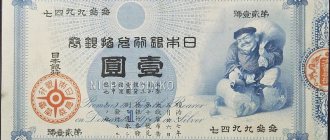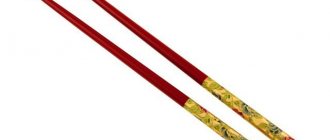Japanese currency: convergence course
The currency of Japan, its exchange rate today is a relatively predictable variable in exchange trading. At the same moment, the Yen came under the complete control of the dollar and was completely dependent on export transactions with Europe.
The soft credit policy of the Central Bank of Japan makes it possible to neutralize currency risks for most businessmen and traders. The Japanese economy, despite prolonged deflation, was able to overcome the crisis.
What strengthens the national course of the Land of the Rising Sun? Naturally – investments. If you are looking for a scientific area for investment activity, then there is nothing more effective than entrusting your capital to the Japanese.
Growing innovations and nanotechnologies are sure to bring profits that won’t have to wait long. However, keep in mind that this investment method is quite expensive.
US dollar, world economy and Japanese currency
I once watched a program on Channel One with Mikhail Leontyev. There was an interesting program, the name of which, unfortunately, I did not remember, dedicated to the recent financial problems in America and the imminent decay of the American dollar and all of America.
In principle, the film is intriguing, and I approach the topic with understanding. In principle, I don’t like aggressive policies, all sorts of double standards and greedy ambitions of superpowers. In short, I watched this program with interest until I discovered a completely obvious mistake in it.
The voice-over said that the dollar is valued less and less in the world, and souvenir sellers in China were the first to react to this. They seem to no longer sell their goods for depreciating American dollars.
And then taxi drivers in Japan do not want to accept North American currency for payment . The scene literally looked like this. A client in a taxi tried to pay a Japanese taxi driver with dollars. He smiled embarrassedly, politely refused, and even moved away from the client with his whole body, saying something like “Japanese money please!”
What's wrong with this? Anyone who has never been to Japan may take this at face value. I don’t know how things are with the American dollar in some distant Uruguay, but in Japan it’s absolutely impossible to pay for a service or purchase in dollars!
… “Remember that neither in a taxi, nor in a store, nor in the vast majority of other places in Japan, you will not be able to pay in dollars or any other currency other than Japanese”...
And this has nothing to do with the state of the American economy. They just don’t accept dollars, that’s all! And this has been going on since time immemorial. By the way, just in case, I’ll mention that Japanese taxis are quite expensive, and taxi drivers are accurate when calculating. I also don’t recommend tipping them, otherwise they will have to chase you down to return your money.
I remembered another incident . I once had a conversation on a plane with a compatriot flying from Japan. She was angry at the Japanese hotel staff who did not accept dollars as payment. In her perception, this was almost medieval savagery and spoiled the overall impression of the trip.
Is the Japanese currency comparable to the ruble?
There is a downward trend in the cross rate of the Yen against the ruble. However, it is significant only for traders trading on intraday turnover.
The Japanese currency against the ruble is stable and has a narrow range of amplitude fluctuations, which makes it possible to predict the behavior of both monetary units in the long term.
What is the secret of the Japanese miracle? The answer lies on the surface:
- Low % unemployment.
- High demand for deposits among residents.
- The vector of state policy is to increase the well-being of citizens.
But keep in mind, the Japanese mentality is a 100% guarantee of the success of the country’s economic growth. Government support for domestic consumers leads to mutual support among Japanese residents for the elected government, which avoids exhaustive militarization of the economy.
Japanese currency against the dollar: reality and fiction
The dynamics of the specified JPY/USD pair reflects purely economic processes.
The peak of the exchange rate with a linear sideways trend of 125.61 occurred in the summer. To date, there has been a decrease of 1.51 points, which is due to a number of factors:
- Differences in the monetary policies of both countries.
- Lack of significant influence of the Euro on the Yen.
You can make your own forecast. When predicting the trajectory of the JPY, keep in mind that the Japanese currency will decline against the dollar due to factors:
- Programs for increasing the Asian money supply.
- Reductions in US export operations due to the tripling of the dollar.
What currency should I take to Japan during the holidays?
You can take dollars or yen, but keep in mind that the exchange office hours in most Japanese settlements are from 9:00 to 15:00.
When going in transit to Taiwan, it is better to prepare the currency in advance. Don't carry rubles with you.
It will be inconvenient for you to calculate the cost of Japanese goods in rubles, which are not accepted everywhere, since local banknotes have a large number of zeros.
There are two excellent ways to import currency:
- By bank card.
- Translation.
The first option is the safest and most convenient. And what currency to take to Japan is a secondary question.
Bank cards in Japan
Many people associate Japan with modern technologies, in particular with robotics. In this regard, you will probably be somewhat shocked by the fact that bank cards are not held in high esteem here. Here are some interesting facts about them:
- ATMs only accept cards issued by local banks.
- The smaller the store/restaurant, the higher the likelihood that you cannot pay with a card.
- Supermarkets have separate cash registers for paying for purchases with cards.
- When withdrawing cash, pay attention to the commission; it can sometimes exceed the amount you want to cash out.
History of the Japanese yen
The history of the Japanese yen began in 1869, with the minting of the first coin. It appeared in free circulation in 1871, after the monetary reform, replacing clan paper bills. The process was completed only after 8 years. Fractional units were also used, but were withdrawn from use in 1954. In 1927, Japan was hit by a crisis and banks issued additional banknotes. It is noteworthy that at that moment single-sided 200 yen bills appeared. In 1949, the yen lost significantly to the dollar (1:360), but then the situation stabilized. Now the Japanese currency is considered one of the most reliable.
History of monetary circulation in Japan
Today everyone knows that the national Japanese currency is called the yen. However, the state did not immediately come to a unified monetary unit.
In the Middle Ages, more than 1,500 different coins circulated on the archipelago, which were made of silver or gold. Such diversity could not be maintained for long. The establishment of autocracy in most of the country made it possible to overcome it.
In 1868, currency reform was carried out in Japan. Its result was the emergence of the yen. The monetary system became strictly decimal:
- the yen consisted of 100 sen;
- A sen was equal to 10 rins.
These monetary units were in circulation until 1954. The yen appreciated steadily until the mid-1980s.
The result was deflation, causing significant increases in US dollar prices. And in 1991, several financial institutions went bankrupt.
The exchange rate of the Japanese currency fell in the early 90s, but the country's authorities managed to correct the situation and the position of the yen strengthened. Even the earthquake that occurred in 2021, which caused a tsunami, did not cause its fall.
Currency exchange in Japan
If you are going to visit the land of the rising sun, it is better to buy yen in advance. They are freely convertible in Russia and can be exchanged at a local bank. Currency exchange in Japan will be more expensive due to the higher exchange rate and the lack of the yen-ruble pair, which means you will have to pay a double commission for two transactions.
If the need for exchange arises, it can be made at the airport or a Japanese bank. Take into account the banks' opening hours. If you need currency urgently, but you cannot get to the nearest bank, it can be exchanged at the hotel without any problems. The course will not be the most profitable, and the quantity is limited.
Japan is a cash lover. What you need to know about payments and the local currency - Japanese yen
Approaching the gloomy time of year in Latvia, some tourists want to see the luxurious and mysterious states of Asia. Japan is becoming an increasingly popular destination among Europeans due to its mysterious and unique culture. The interest of tourists is also fueled by the reduction in prices for air travel in this direction and the expansion of the flight network.
Compared to 2015, in 2021 the number of tourists increased by 21.8% and amounted to 24.03 million people. A huge number of tourists spend incredible amounts of Japanese yen every year. Cash is still the preferred mode of payment in Japan, especially if the transaction amount is small.
The currency of Japan is the yen.
The Japanese yen is one of the most important currencies in the international monetary system, and it is also one of the most popular currencies on the foreign exchange market.
Japanese yen code is JPY. Currently in circulation are banknotes of the following denominations: 1000, 2000, 5000 and 10,000.
Exchange rate cheat sheet
At the moment, 1 euro can buy you about 130 Japanese yen (the current exchange rate can be seen here). When in Japan, the listed price in Japanese yen must be divided by 130 to determine the price of the product or service in euros.
It’s unusual for us to see prices for standard goods or services with many zeros, so we offer an exchange rate cheat sheet that can be easily printed and put in your wallet.
This cheat sheet shows the conversion of euros into Japanese yen for various amounts. The approximate value of each euro banknote is mentioned below:
| Denomination | Value in EUR |
| 1,000 JPY | ~ 8 EUR |
| 2,000 JPY | ~ 15 EUR |
| 5,000 JPY | ~ 38 EUR |
| 10,000 JPY | ~ 77 EUR |
How safe is it to pay in Japanese yen and what should you keep in mind?
Japanese money is not often counterfeited, however, due to the popularity of the currency and the rare use of this money by our tourists, it is worth checking the money upon receipt. This is especially true for the largest denomination - 10,000. To resist counterfeiters, Japanese money is created with significant security elements, which are very difficult to counterfeit convincingly. Such elements are - hologram, watermark, luminescent, etc.
How do we check if a banknote is genuine?
An interesting feature of this money is that all banknotes are made of rice paper, which has a denser structure and a unique color. The watermark on Japanese yens is also very unusual - viewing the banknote against the light reveals a three-dimensional portrait that looks more like a photograph than a drawing. On counterfeit banknotes, the watermark is not a compacted structure in the paper of the banknote, but is most often printed on top.
It is also worth checking the banknote under UV rays. One of the main security elements is the fluorescent applied to the image of the hieroglyph on the banknote, which changes color from red to orange when exposed to UV rays.
On the 5,000 and 10,000 JPY banknotes, an additional security element appears - a hologram on which the logo of the Central Bank of Japan changes to an image of a cherry blossom. The hologram shimmers in different colors when viewed from different angles.
All security elements can be found on the official page of the Central Bank of Japan or by asking service specialists
Features of payments in Japan
Japan is developing every day, and payment traditions are gradually changing. Payment cards are increasingly being accepted, however, cash is still the most popular form of payment in Japan.
Most often, cash is the only way to pay for small purchases/inexpensive services in tourist places, and cash will also be needed in temples, taxis and public transport.
Using cash in Japan is quite safe due to the low crime rate in the country. Japan is considered one of the safest countries.
In Japan, it is not customary to leave a tip, and if you leave a tip in a restaurant, the waiter will most likely run after you to return the money you left. At higher-end restaurants and hotels, a 10% service charge is automatically added to the bill.
Before you decide to pay for purchases with a card, find out how much it costs!
Paying by card is not at all as profitable as we think. Find out what the costs of your card are and how much you are overpaying compared to purchasing Japanese yen in cash.
We calculated the cost of purchasing 50,000 Japanese yen: 1) if you withdraw it from an ATM in Japan; 2) if you pay by card in Japan; 3) if you buy 50,000 Japanese yen in cash at a Tavex branch in Latvia.
Historical rates of VISA cards can be seen at www.visaeurope.com Historical rates of MASTERCARD cards can be seen at www.mastercard.us
Where to buy Japanese yen?
If you are planning to travel to Japan, you need to plan in time when and where you will exchange euros for Japanese yen, and also take a debit/credit card with you as an alternative. The currency of Japan is one of the most stable and popular currencies in the world, so it is relatively easily available at a favorable rate.
Speaking about currency exchange in Japanese banks, not all banks have the right to provide this service, moreover, the currency exchange process takes a significant amount of time and requires filling out various bank forms.
The best solution is to purchase yen in Latvia in a timely manner, which will be clearly more profitable than exchanging currency at the airport in Japan or withdrawing cash from ATMs. It is worth noting that some ATMs in Japan only accept cards from local banks.
You certainly won't want to be left without delicious street food and an enticing variety of sushi that will not leave anyone indifferent.
Summarizing
Cash is extremely popular in Japan, which means that a profitable option would be to exchange euros for Japanese yen and leave the card as an alternative payment method.
If you have any questions about payments in Japan and purchasing yen, feel free to ask your Tavex service specialists or call +371 6720 5533.
Follow new articles and news on social networks:
*facebook.com/TavexLatvia/ *instagram.com/tavex.lv/ *draugiem.lv/tavex/
>>> Read about the features of payments in other countries here!
Dynamics of the Japanese yen exchange rate
The good dynamics of the Japanese yen exchange rate is due to three reasons. The first is economic stability and large volumes of exports in the state. The second is the status of a world reserve currency (although the volume of international savings has decreased slightly compared to 1999-2000). Finally, the third is a free course. The value of the local currency is determined solely by the current economic situation and is not fixed by the bank or government.
In recent years, the dynamics have not been the best, but the yen maintains its status and remains in demand among players and investors.
Gold standard of the Japanese yen
Since its inception, the yen has been on the gold standard. One unit was equal to 1.5 gold. In a short time it has undergone significant changes. The gold standard of the Japanese yen was introduced and canceled more than once, focusing on the current situation and economic indicators. By the end of the 30s, the standard was completely abolished. However, some analogue of this standard remains.
The yen gained international recognition in 1953. At this time, the cost of one yen was 2.5 milligrams, but subsequently it increased significantly. It is now one of the most reliable gold-backed currencies.
Deflation of the Japanese yen
A strong currency has its drawbacks, as can be seen from the example of Japan. Deflation of the Japanese yen is associated with overproduction and forces the government to take various measures to control exchange rates. At some points, there were attempts to reduce the value of the local currency artificially (quantitative easing). It may be used repeatedly.
Excessive strengthening (growth) of the currency leads to a decrease in export volumes, increased labor costs, as well as other negative phenomena. For this reason, Japan is carrying out economic reforms and trying to accelerate inflation.
The land of sushi, samurai and sakura, or How to plan a trip to Japan?
Travel expert of the service for booking author's tours YouTravel.me Elena Evsyukova first visited Japan thirty years ago, studied, traveled and even lived in the country of the samurai for several years. We asked Elena to share useful tips on how to prepare for a solo trip to Japan.
When to go?
The most popular time to travel starts from mid-March (during cherry blossom) and lasts until approximately the end of May. There are also many people who want to visit the country from mid-September to the end of November and admire the flowers and red maples. Recently, winter has also become popular. There are a lot of good ski resorts in Japan that are relatively inexpensive. Hot springs, popular in Japan, are also in demand at this time.
What to visit in Japan?
Information on main cities, attractions and museum opening hours can be found on Visit Japan, and for those who speak English, the Japan Guide website will be useful.
To begin with, it’s worth including the ancient temples of Kyoto, Nara and Kamakura in your route:
Nara:
- Todaiji Temple, the largest wooden structure in the world, entrance ticket - 600 yen (about 350 rubles).
Kyoto:
- Kinkakuji Golden Pavilion, entrance ticket - 400 yen (250 rubles),
- Ryuanji Rock Garden, entrance ticket - 500 yen (300 rubles),
- Temple of Pure Water Kiyomizu-dera, entrance ticket - 400 yen (250 rubles),
- Fushimi Inari Taisha Shrine is the main temple of the goddess Inari. Free admission.
Kamakura:
- Tsurugaoka Hachimangu Shrine (free admission),
- Temple of Hasedera, entrance ticket - 300 yen (175 rubles),
- Kotoku-in Temple, entrance ticket - 200 yen (120 rubles).
You should definitely get acquainted with Japanese super technologies: take a ride on the Shinkansen high-speed bullet train (the cost of a one-way ticket from Tokyo to Kyoto is 13,800 yen, about 8,400 rubles), as well as on an unmanned magnetic levitation train.
Plunge into traditional culture: samurai swords, Japanese kimonos, tea ceremony and Kabuki theater (from 14,000 yen, ~ 8,500 rubles)
Take a look at the gardens and parks: Hamarikyu in Tokyo (entrance ticket - 300 yen / 175 rubles, the price includes a free audio guide in English), Arashiyama Bamboo Forest in Kyoto.
And visit museums: the world's first digital art museum MORI Building DIGITAL ART MUSEUM, the Miraikan Museum of the Future.
Where to live?
You need to book your accommodation at least 3-4 months in advance, and even earlier if you plan to visit the country during the high season for cherry blossoms.
You can save money by staying in hostels or capsule hotels. This is Japan - everywhere is clean and comfortable. There is no need to worry about your belongings: in hostels and capsule hotels they will be stored in a separate storage room, to which you will have constant access.
The cost of a night in a pleasant hostel or capsule hotel is from $30-40 per day; for a three-star hotel you will already have to fork out - prices start from $50-60 per day with early booking.
How to get a visa?
Japanese visa is free. You can obtain it yourself at the Japanese consulates in Moscow, Khabarovsk, Vladivostok, Yuzhno-Sakhalinsk.
We have already written in detail about obtaining a visa on your own: here are the instructions.
Standard list of documents: a certificate from the bank - there must be at least 100 thousand rubles in the account, a stay program in English or Japanese indicating the address and phone number of the hotel. No proof of employment is required.
The visa processing time from the date of submission of documents is usually four working days. There are usually no queues. A tourist visa can be issued for a period of 15 or 30 days.
How much money should you take with you?
You should budget at least $80-100 per day for food, transportation and small expenses.
Be sure to have Japanese cash with you. To the surprise of many tourists, cards are not accepted everywhere in Japan. This is something specific to this country, where even salaries are still paid in cash.
Foreigners with a tourist visa can buy a JR pass (Japan Railway) online in their home country. Its price for 7 days is $277, for 14 days – $438, for 21 – $526. The JR pass allows you to travel on trains, buses, and the Shinkansen. You will need to pay extra for the metro and trips on transport from other companies. Subway travel in Tokyo can cost $1.5-4 per trip depending on the distance. There are also passes for 1-3 days, which can be beneficial if you travel a lot.
The cost of lunch in a restaurant is from $15, dinner – from $20. A trip to a fast food establishment will cost $8-10. It is not customary to leave a tip anywhere; in many places the service charge is already included in the check. They will always give you change until the last yen. When it comes to etiquette, you should remember that Japan is a small and expensive country with limited resources. It's best not to order more than you can eat, it will look very wasteful.
How many days to go to Japan?
The minimum travel duration that I recommend is 7 days, but if possible, 10 is better. Traditionally, tourists who travel for the first time want to visit the cities of Tokyo, Kyoto, and Nara. If you plan your route wisely and purchase a JR pass, you can see a lot.
Passport, cards, money: what else should you take with you?
- Clothes for the season, good and comfortable shoes. You don't have to take an umbrella. An umbrella will be provided at literally any hotel rental. If you are staying in a hostel, you can buy an umbrella for $2-3 at any street store.
- You will need an adapter for the outlet. The hotel will provide it to you, but in other places you need to take care of it yourself - take it with you or buy it at an electrical goods store.
- Insurance is required. Japan is definitely not a country where you can save money on a policy. If you consult a doctor, the amount will be significant.
- General medications can be purchased at a pharmacy. They are a little more expensive, but the price is quite reasonable. It is better to take other medications with you.
Are you planning a trip to Japan and don’t want to waste time on organizing? Join my travels.
Tickets to Japan
Japanese yen banknotes
In Japan, coins are used in denominations of 1, 5, 10, 50, 100, 500 yen, and there are also commemorative silver items in denominations of 1000 yen. Japanese yen banknotes range in denomination from 1,000 to 10,000. Most of them were issued in 2004. Occasionally, 2000 banknotes are found.
The 2000 yen banknote of the first series is green. On one side is a picture of a gate in the city of Naha, on the other is an illustration of The Tale of Genji. She hardly ever appears. In Japan, blue, purple, and brown banknotes with images of national heroes and landmarks are common.
What to take with you to Japan? Need advice from those who have been...
There is no need to be excessively fanatical when collecting things, otherwise you will take a lot of extra things that will only get in your way and will not help you in any way. First of all, you should take with you those things and items that are impossible or problematic to buy directly in Japan. Although Japan is considered one of the most developed countries in the world, it has its own principles, traditions and way of life that are significantly different from ours.
First of all, take the necessary medications with you (especially if you suffer from any chronic diseases). To buy medicine in Japan, you need to get a doctor's prescription (there will be a fee for seeing a doctor, no matter what insurance you have). In Japan, other approaches to treatment and drugs that we often use and that help us simply may not be available in this country. Well, an important fact is that medicines in Japan are very expensive, and I don’t think anyone would want to spend money not on food and entertainment, but on pills, syrups, etc.
You also need to take with you toothpaste, a brush and a certain set of personal hygiene products, so that immediately after arriving in the country you do not have to run around the city and look for where you can buy the products and items you need.
Take all the necessary gadgets with you, don’t forget the chargers, but be prepared for certain difficulties that may arise when using electrical appliances. Please note that the voltage in the electrical network is 100 V and your gadgets must be adapted to this voltage. In Japan, plugs with flat, vertical pins are used, so you will definitely need an adapter (you can buy it at home or already locally in Japan).
Bring light shoes, as many Japanese premises require you to take off your shoes when entering. It would be a good idea to always have a handkerchief and toilet paper with you, since some restrooms do not provide such personal hygiene products.
In order to at least somehow level the language barrier, you need to take a Russian-Japanese phrasebook with you. Despite the entire development of the country, not all citizens speak English and you may have certain problems in communication, but a phrase book can at least somehow help you.
Clothing for a trip should be selected based on the time of year, as well as the region you plan to visit. A jacket and an umbrella will definitely not be superfluous. If you plan to visit religious places, then clothing should be appropriate.
Bring your favorite cosmetics with you, as they may not be available in Japan. In Japan, the national currency is called the yen and it is not so easy to buy it in Russia, so it is best to take dollars with you; there will be no problems exchanging them. You can take credit cards with you, which are accepted almost everywhere.
This is an approximate list of the things you need to take with you. It all depends on your preferences, as well as on the specific purpose of your trip and what you are going to do in this country, except for work issues.
Yen as a reserve currency
For decades, the Japanese currency has been considered a reserve currency and is extremely popular among investors and players. It is considered second in importance. However, in recent years, the yen as a reserve currency has not pleased investors: the volume of funds around the world has decreased by more than 5% since the beginning of the new millennium.
The reasons for this are problems in the country’s economy, which led to excessive strengthening of the currency and deflation. The authorities are taking all measures to reduce the exchange rate and make it less stable, but this does not help much. Despite the problems, it still competes with the British pound sterling and the Swiss franc.
Summarizing
So, a short summary of this article:
- The most convenient way to pay in Turkey is in cash in TL.
- It is best to withdraw money from a card at ATMs, so there is no point in taking a lot of dollars or euros with you. It is better to take a small amount of cash just in case.
- It is best to exchange cash at exchange offices or through ATMs.
- You can pay for goods and services in any currency, but the exchange rate will not be favorable for you.
- To avoid blocking your card, notify your bank about your upcoming trip.
- The ATM withdrawal fee will be indicated before the withdrawal.
- It is more profitable to receive or send money to/from Russia using the Zolotaya Korona system.
By following these simple tips, you can exchange currencies and withdraw cash without any significant exchange losses.
We wish you a good trip and a pleasant holiday!
If the article turned out to be useful, you can support our editorial team in difficult days for tourism (the amount can be any).
Origin of the name yen
The origin of the name yen is curious. It is connected with the history of trade in Asia. During the Qing Dynasty, China used yuan - silver bars. In the 18th century, silver coins were brought to China from Mexico and Spain, which became known as Western yuan. Then the British started producing silver coins, which they called Hong Kong yuan - after the place of issue. They eventually ended up in Japan, where they received the name in Japanese - “en”. Subsequently, the “en” gradually transformed into the yen. Already in 1830, they began to issue their own coins here. The official name “yen” appeared a little later.









